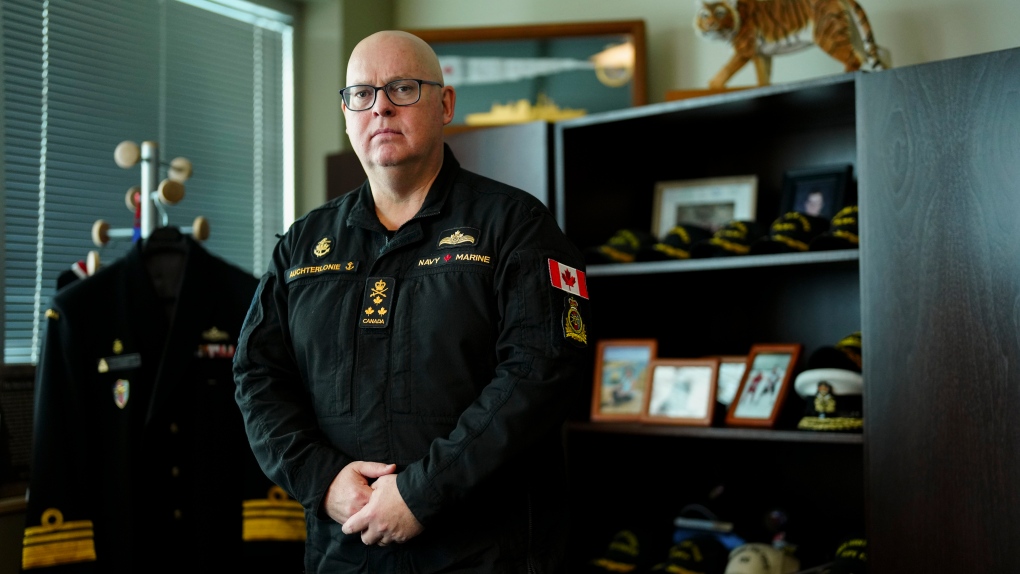Ottawa –
It’s Bob Auchterlonie’s job to be ready for the next crisis, whether that’s a wildfire, a flood, a hurricane or war on another continent.
As the commander of the Canadian Joint Operations Command, the vice admiral has had an extraordinary year that included co-ordinating airlifts of Canadians from Sudan and Israel, planning possible evacuations from Lebanon and Haiti, and managing the growing demands for help at home.
Looking ahead to 2024, Auchterlonie said he thinks the pressure will continue to mount, and Canadians are “overly comfortable” about their safety as the world changes.
In a recent year-end interview, he rattled off a list of international issues he’s keeping a close eye on, from the ongoing Russian invasion of Ukraine and Israel’s war on Hamas, to a string of recent coups in African nations, friction in the Balkans and challenges in South American countries like Venezuela that are fuelling mass migration.
“We are in the middle of this and I’m not sure everybody understands that the security and defence situation globally has deteriorated significantly,” he said.
Canadians have always felt relatively safe because we are surrounded by three oceans and the United States, Auchterlonie said, but it’s his responsibility to be aware of what may be coming and he’s not optimistic.
“I’m very happy Canadians feel safe and secure. I also think it’s very naive,” he said.
He cited increasing competition between major world powers and tension between the countries that are committed to the rules-based international order and those challenging it, like China, Russia and Iran.
All of that makes it more difficult to be a middle power, Auchterlonie said, especially one that hasn’t kept up with investing in new security capabilities. While he wouldn’t say whether Canada has less influence than it once did, he said he is being asked questions he didn’t used to face.
“I get questions from our closest allies about our commitment and questioning us as a reliable partner, questioning our investments moving forward,” he said.
Defence spending commitments have been an issue for Canada for years. The incoming commander of Norad, Lt.-Gen. Gregory Guillot, said during his confirmation hearings in the U.S. Senate last summer that he planned to have tough conversations with Canadian officials about funding for continental defence.
NATO allies have agreed to spend a minimum of two per cent of gross domestic product on defence, including one-fifth of that sum on new equipment, but Canada has not presented a plan to boost spending to the two per cent threshold and has advocated for a different formula to help reach its targets.
The federal government has started multi-billion dollar procurement projects for new Arctic and offshore patrol ships, F-35 fighter jets, P-8A surveillance aircraft, unmanned drones and surface combatants, many of which are years away from being in use.
And the Armed Forces is dealing with a shortage of personnel that senior leadership has called a crisis.
The military has about 16,000 unfilled positions even though reconstitution has been its top priority since late 2022. In a year-end message to members, defence chief Gen. Wayne Eyre said the force numbers are “beginning to stabilize” but said it will take several more years of work.
Officials told the House of Commons defence committee this fall that as many as 10,000 more soldiers lack the training they need to be ready to deploy.
At the same time, Canada has pledged to boost its presence on NATO’s eastern flank in Latvia and in the Indo-Pacific.
It’s sent special forces to the Middle East to monitor the Israel-Hamas war and has sent a contingent of three officers to the Red Sea as part of an international mission to protect critical shipping routes that are being targeted by the Houthi rebels.
Canadian military members have also been called upon to help with recovery from natural disasters and extreme weather here at home at an unprecedented rate in recent years.
Auchterlonie said all of that means “there has to be trade-offs within the Canadian Armed Forces and within the government of Canada.”
More than 2,000 Armed Forces members were deployed to fight wildfires across Canada for 131 consecutive days in 2023.
The military worked on planning for evacuations in Yellowknife in mid August when fires threatened the city and helped 158 people leave hospitals and care homes. In that instance the military was the force of last resort, Auchterlonie said, and had the specialized equipment needed.
But he insists that is not always the case.
Auchterlonie said all that time spent on domestic operations means troops are not training for international missions.
It’s not likely that demand at home will slow. Climate change is causing more extreme weather events and Defence Minister Bill Blair has said that Canadians are reassured by seeing troops in uniform helping out during disasters.
Auchterlonie wants to see a critical conversation about where the military fits in to disaster response and whether emergency management agencies can take over.
In the meantime, when the federal government calls on them for help, he said “We will respond as we always do.”
This report by The Canadian Press was first published Dec. 31, 2023.







